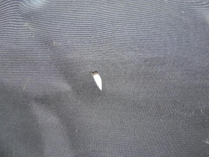Spring Pond Care

Spring is soon upon us; soon you will be able to sit beside your pond in warmer temperatures and enjoy the peace and serenity it provides. But before you can enjoy it, there are a few things you ought to do in the meantime to prepare. You may also be interested in our Spring Checklist blog post.
Damaged Pond Liner (Useful Blogs: Pond Liner Guarantees and Repairs)
You may have started to see your pond leaking over winter; but because its winter, you may have put this task off, particularly if you don’t have any fish in the pond or if it’s a wildlife pond. Now is the time to fix it.
There are some easy tricks you can use to identify where the fault is. Either you can fill the pond up and allow it to drain to where the leak is or you can fill the pond up and put a glass of milk into the pond so you can watch where the milk is drained to. Both techniques will give you an idea of where the fault is. If its an easy location, a repair kit will be the easiest course of action, or you may want to lay a new liner on top of your existing liner; our Flexiliner range is excellent for this, as it’s durable, lightweight and really easy to install!
.png)
Prevent the Pond from Freezing (Useful Blogs: What To Do If Your Pond Freezes Over)
Brrrr! It’s cold outside! It’s best if you stay wrapped up inside to stay nice and warm. But what about your pond? Colder temperatures lead to ponds freezing over. This is a disaster for your pond if it goes unnoticed for too long. In short, the ice on the surface blocks the water underneath from getting any oxygen, causing chemical problems in your pond and it could lead to your fish dying.
Keeping your pond from freezing can be simple. Keep a pond pump or an air pump running in the pond; this prevents ice from forming on the surface of the water. Alternatively, you can use a pond heater to keep a small patch of your pond clear from ice.
Your Pump has seized up (Useful Blogs: Pump Maintenance & Troubleshooting, Pond Pump Maintenance)
In most situations, keeping your pond pump running through winter is fine. But if you experience cold weather for a prolonged period (winter can be unpredictable, so stay alert!), it is best to check on your pump regularly for any signs of it failing. If your pump does seize up from the cold weather, it’s best to remove it and allow it to thaw in some warm water so that any ice breaks up. If this hasn’t worked, try checking the impeller inside the pump and the electrical cable going to your power supply; as this could have been damaged from the cold weather.
Warped Filter
If you have left your filter on throughout the winter period, the cold temperature may have warped the shape of your filter. It could be that you have a pressurised filter and your bucket has begun to bow outwards, or your box filter's lid is now wobbly rather than sitting flush. Unfortunately, these are difficult to re-adjust and won’t fix themselves. In these situations, either you can replace the filter (the expensive option) or you can look through our list of spare parts and see what’s available!
.jpg)
If you leave your filter outside in the cold, you may find that your UV bulb or your quartz sleeve have been damaged; this can happen because of the colder temperatures causing the glass to crack. Spare Quartz Sleeves or UV bulbs can be viewed on our Pond UVC Spares page.
Split Hose
Like the above, the cold weather can also cause your hosepipe to crack. If you see your pond leaking, check your liner and also check your hose and connections. It’s quite easy to check the hose going from your pump to your filter and back. If you do need any hose, we sell a variety of hose equipment, as can be seen on our Hose, Clips and Fittings page.
Filter Foams
As is likely, you may not have replaced your filter foams for a while because of winter. But as Spring is nearly here, you should replace the filter foams in your pond soon so that your filter is primed and ready to clean the debris out of your pond as efficiently as possible. This will help prevent a build up of sludge and your fish will thank you! All of our Filter Foams can be viewed on our Pond Filter Spares page. Please see our Filters & Their Maintenance page for more information on filter maintenance.
.png)
Symptoms of Poorly Fish
If your pond has become littered with organic debris, plants haven’t been cut back in winter or you are seeing any of the below signs of poor water quality, now is the time to remedy this.
• Fish showing any symptoms of any fish diseases.
• Foul odours - decaying organic matter (Fish waste, plants, sludge) can indicate a problem.
• Murky looking water.
Firstly, please test your water. Monthly testing is best, using either the Tetra Pond Test 6-in-1 or the Blagdon Pond Health Test Kit. These will help you to identify any problems with your Water Quality. Secondly, remove all physical debris that you can using a Pond Net or Pond Vacuum; this will remove decaying matter which contributes to the build up of harmful chemicals.
Stock up on Pond Supplies
The last thing to note is to make sure you are stocked up on fish food and any treatments you may need. You don’t want to get caught out when the weather warms up and your fish are hungry!
You may also find the below blogs useful:
• March and April Pond Care
• May Pond Care
If you need any advice, please email us on info@pondkeeper.co.uk.